





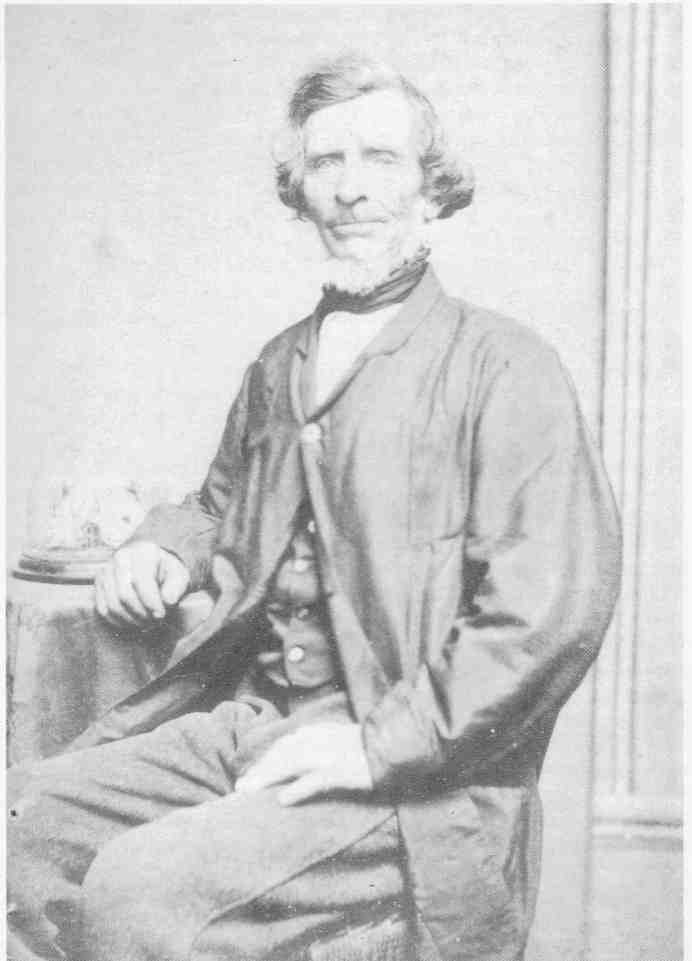 Joseph Stevenson (1802-1878)
Joseph Stevenson (1802-1878)
Joseph STEVENSON married Ruth BOYD (d.1868)
Children:
- David (1838-18 March 1868) drowned, never married.
- Jane (1840-1911) married James MESS.
- Isabella (1841-1874) married Donald GRANT.
- Margaret (1843-1880) married Frederick HARGREAVES.
- Robert (1845-1933) married Ellen ARMSTRONG.
- Ruth (1847 - ?) married Thomas SADLER.
- Joseph (1848-1914) married Mary Emma PEERS.
- Ellen (1850-1940) married William LITTLE.
Joseph STEVENSON departed Scotland in 1832 on board the ship
Wellington bound for Sydney.
In Sydney he married Ruth BOYD (the daughter of convict Alexander
Boyd).
Soon after their marriage, Joseph and Ruth moved to Tasmania where their
son David was born.
Joseph was a joiner by trade and worked a year or two in Tasmania in the
timber industry.
He then moved to Melbourne on the Yarra and purchased the half acre
allotment on the corner of Swanston and Little Bourke Streets at the 3rd
Melbourne Land Sale on the 13 September 1838.
At the time, Melbourne was on the verge of a land boom. STEVENSON
built a Horse Bazaar in Bourke Street for James Bowie KIRK and a punt
called the Melbourne, to ferry passengers and goods across the Yarra for
William WATTS.
STEVENSON’S Melbourne years appear to have provided the capital for
him to purchase the bullocks and equipment he required to launch himself
on the land at Arthur’s Creek in 1841 (near the present day township of
Diamond Creek).
Local tradition has it that the name Diamond Creek was derived from a
mishap that STEVENSON had near Gums Bridge where he lost his most
valuable bullock - an animal answering to the name Diamond. He always
referred to the stream as ‘the one Diamond’ was in and as time passed it
became known as Diamond Creek. Another theory is that the stream was
named after crystals that were said to be found in the creek.
In 1842, STEVENSON established a sheep station and built a homested
on some unsurveyed country, out past Kangaroo Ground at the junction of
Watsons and Five Mile Creeks. Later that year in October, in need of a
shepherd, STEVENSON rode into Melbourne and hired a man by the
name of David CHRISTMAS (an emancipated convict), and left him to
find his own way to STEVENSON’S yet unnamed station in the hills.
CHRISTMAS seems to have managed as far as Kangaroo Ground, but in
the trackless scrub beyond, somehow managed to become hopelessly lost.
After days of aimless wandering, during which time he is said to have
eaten his dog, he was rescued after making his way toward the sound of
bells. Some versions claim he mistook the bells for that of St Paul’s.
Instead, the bells hung from the necks of STEVENSON’S bullocks. In
acknowledgement of CHRISTMAS’ salvation, STEVENSON named his
9600 acre run Christmas Hill Station.
150 year later, on 11 October 1992, the people of Christmas Hill gathered
to celebrate the event. They unveiled a plaque of a memorial erected above
CHRISTMAS’ bush grave. Afterward, to the lilt of the Welsh nation air
‘We’ll Keep a Welcome on the Hillside’, a toast was drank in
remembrance of the Welsh shepherds’ exploits.
In 1847, STEVENSON sold his Christmas Hill Station to Henry DENDY
and moved to Kangaroo Ground, where he purchased 78 acres (allotment
3 section III) - a less prestigious farm - on the eastern edge of the district,
partly on and partly off the black volcanic fertile soil. There, he built the
family home, Bank Head.
By the 1860’s, the STEVENSON’S had a sizeable vineyard on the
property’s eastern slopes, said to have produced ‘very light by agreeable
wines’ that sold well at Melbourne and overseas markets.
Years later, the STEVENSON’S added a further forty-odd acres to the
property with a long road frontage leading down to Watson Creek. It was
STEVENSON who built Andrew Ross’s house, and who later became a
first trustee of both the common and the cemetery; and early member also
of the Eltham Road Board.
Joseph and Ruth’s eldest son David (born in Tasmania) selected land
above Fryer’s Gully under Section 31 of the Land Act. David worked his
farm for just seven months. On 18 March 1868 he set out from Bank
Head in search of lost horses following their tracks to as far as the junction
of the Yarra with Watsons Creek. In attempting to cross the river by way
of a rock-bar (known to present day canoeists as ‘Arthur’s Mistake’), he
lost his footing and drowned.
David’s selection was taken over by his younger brother, Robert, who
cleared and fenced the property for grazing.
In an unfortunate coincidence, 16 years later, Robert and his wife, Ruth
SADLER, had the misfortune to lose their own young son, David,
drowned in their farm dam.
As has been seen, Joseph and Ruth STEVENSON were well established
in the heartland of the district and, already, under the regulations of the
1865 Act, their two eldest sons (David and Robert) had acquired some
marginal land. Nevertheless, with David gone, drowned in the Yarra, and
an awareness that soon the land they had acquired would prove
insufficient for future needs, the family took immediate steps to secure
additional land.
Already, a pattern of settlement was beginning to form. By 1870
practically all the Scots of Kangaroo Ground were related and
Presbyterians; now their offspring were winging their way out from their
embryonic oasis into the less fertile surrounds of the Stringy-bark Forest.
The STEVENSON family eventually selected a number of other properties
along the lower reaches of Watson Creek bring their total holdings to
around 321 acres.
On the morning of 29 August 1870, Joseph STEVENSON with his
surviving sons, Robert and Joseph, his son-in-law, James MESS, and
neighbour’s son, Mark BUNKER, set out for the junction of Watsons and
Sugar-loaf Creeks to peg out for themselves farms under the newly
enacted 1869 legislation. Their selections, they apparently decided, would
have the best of water frontages. Perhaps harking back to the day, 28
years earlier, when he had chosen the Five Mile Creek junction as the site
for his homestead, the elder STEVENSON, this time, chose the junction of
Sugar-loaf Creek as the starting point for his sortie.
Compass in hand, armed with axes and shovels, partly cleared a mile-long
trail due south from Sugar-loaf Creek to McPhersons’ track. Then after
erecting posts every 200 or so paces along their blazed trail, they cleared
six further trails due west for each post to Watsons Creek. There, on the
creek bank, at the termination of their cleared trails, they set up their final
posts. When complete, the manoeuvre saw six farmlets, all with their own
water frontage, enclosed within each four sets of corner posts.
The regulations required that the posts they used be of a particular size, be
painted white, and be readily visible at ten paces. Having clearly pegged
out the land they desire, each immediately arranged for a contract surveyor
(T.S PARROTT) to professionally mark out and accurately measure their
own acreage’s. With all complete, each was then required to pay his first
half-yearly instalment to the Board of Land and Works and make
application for a ‘License to Occupy’. Ten years later, with payments
made, and improvements carried out to the required one pound an acre,
each could expect to be issued with a full title to his land. In the case of
Joseph STEVENSON, his application, in part, read:
I, Joseph Stevenson of the Kangaroo Grounds, farmer, do
hereby solemnly and sincerely declare on oath that on the
twenty-ninth day of August at 12 o’clock I placed posts
with notices thereon, as prescribed by the regulations of
the first of February 1870, at the corner of the allotments
for which I hereby make application ... that at the time I
fixed those posts I saw no other posts on the same
allotments and was not cognisant of any other person
having marked it out ... that I have not selected under any
previous Land Act and the area I now desire to obtain, if
added to any land previously selected by me, would not
exceed 320 acres.
That day, Joseph STEVENSON marked down in his own name there
farmlets - two of 30 acres, the other of 18; his son, Joseph, chose another
of 25 acres, his son-in-law, James MESS, one of 29 acres, and Mark
BUNKER, another of 31 acres. Although heavily timbered each, when
fenced, was ideally suited for the immediate location of stock.
Only Joseph, the old pioneer of Christmas Hills, ever actually resided on
any of these selections - the others simply conformed, as to payments and
improvements.
By 1874, Joseph had enclosed his well-water farm of 78 acres in
post-and-three-rail (chock and log along the creek frontage). Upon it, by
then, he had erected a simple two-roomed weather-board cottage.
After an adventurous life, the aged pioneer had handed the reins of his
Bank Head vineyard to his son, Robert, preferring, instead, to live out his
years in the solitude of the Australian bush that he loved so much. The
Scot in him had seen him nostalgically name his retreat, Kelvin Grove,
after a rustic stream-side park in Glasgow beneath that city’s major seat of
learning on Gilmore Hill.
His 1874 ‘return’ to the Board of Land and Works stated that he had also
built stables for his stock, and had, each year, grown two acres of potatoes
and oats. Alongside his house he planted a seedling oak believed to have
been grown from an acorn brought back from Windsor by his countryman,
John DONALDSON. Today, that tree, immense in age, stands alone in a
deserted paddock, as sole reminder of the abode of a once proud pioneer.
The STEVENSON excursion that day, appears to have been designed
mainly to acquire additional land for stock rather that for actual working
farms upon which to reside. High in their deliberations would have been
the knowledge that soon the Kangaroo Ground Farmer’s Common would
disappear completely into the hands of selectors pegging it out for farms.
Bibliography
WOIWOD Mick; Kangaroo Ground - The Highland Taken; Tarcoola Press;1994.
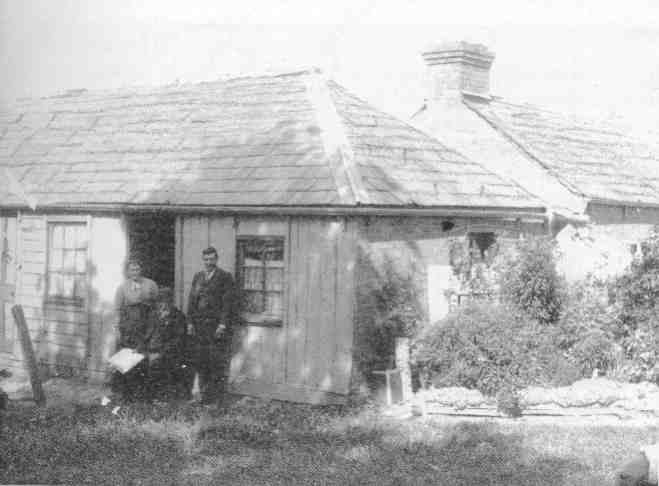 Bank Head House
Bank Head House
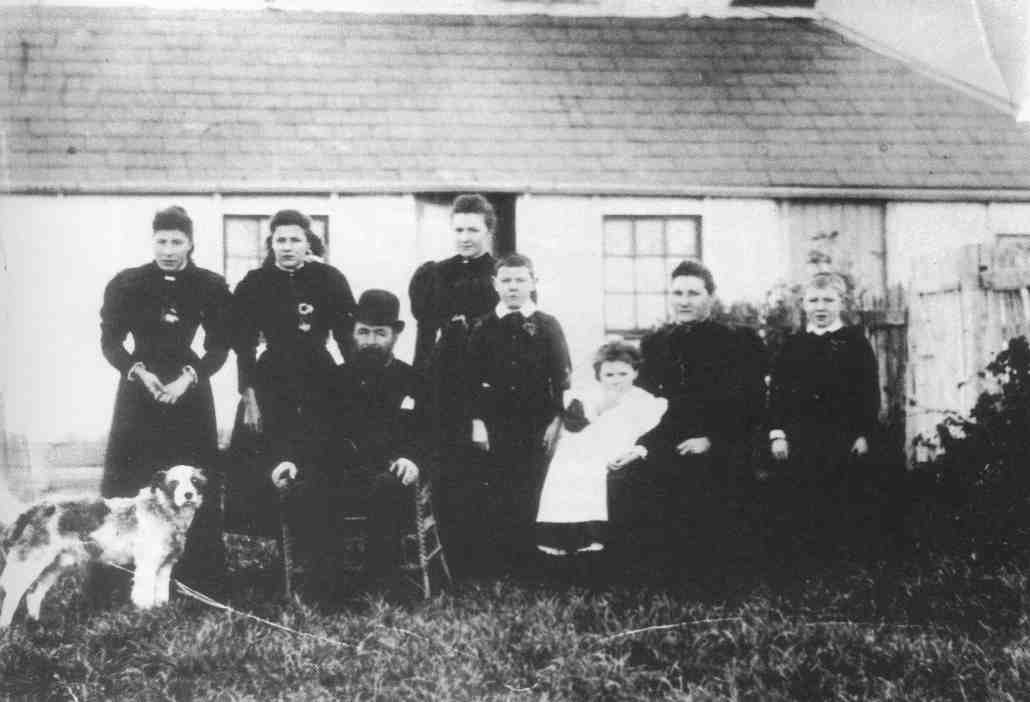 Robert Stevenson
Robert Stevenson
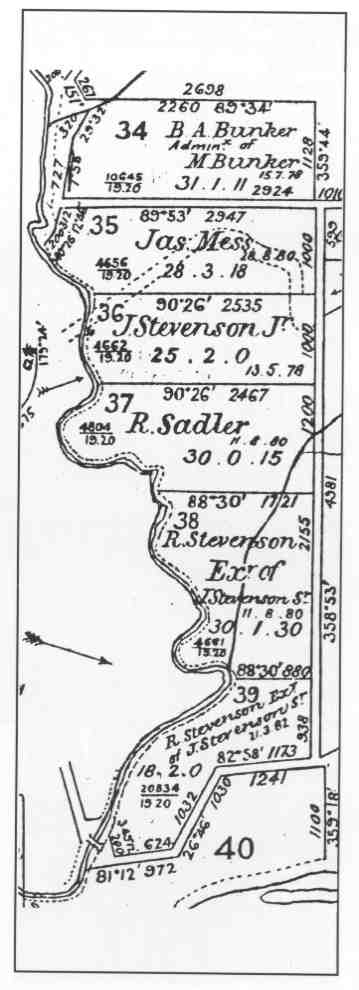 Land Division
Land Division
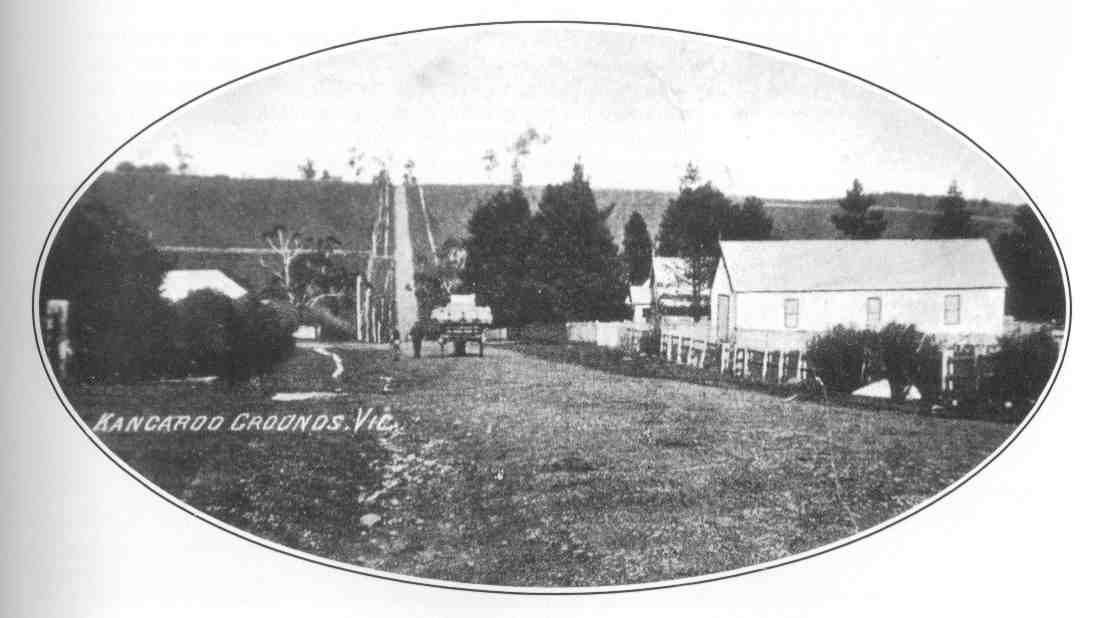 Stevenson Hall
Stevenson Hall